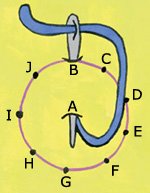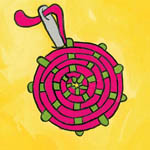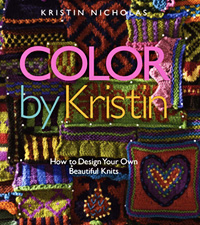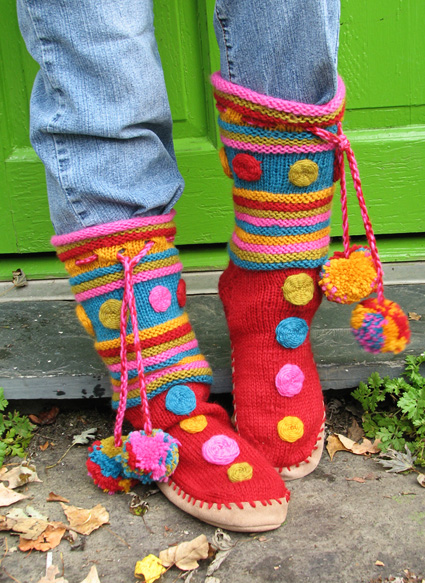 |
"Dating back to the 18th century, the macaron is a traditional French pastry, made of egg whites, almond powder, icing sugar and sugar. This sweet pastry came out of the French courts' baker's oven as round meringue-like domes with a flat base." source: Wikipedia As winter approaches, creature comforts grow in importance. These cozy slipper socks remind me a little of another treat, French macarons -- little round bundles of bright colors and delicious flavor. The curved ridges here are a simple combination of knit and purl rounds, and the slipper is constructed like a simple top-down sock, but at a lovely quick gauge for fast knitting. The circular medallions are done with simple spider web embroidery -- check out the illustrations below and you'll see it's a piece of cake! |
|
SIZE |
 
|
|
FINISHED MEASUREMENTS |
|
MATERIALS |
|
GAUGE |
|
PATTERN NOTES |
|
The leg of this sock is worked using a larger needle, for a slouchy fit. When slipping sts, slip st purlwise with yarn held to WS of work. skp: Sl 1 knitwise with yarn held to back of work, k1, pass slipped st over st just knit. 1 st decreased. Ridge: K 1 round. P 2 rounds. Directions for grafting can be found here. Directions for whip stitch can be found here. |
|
DIRECTIONS 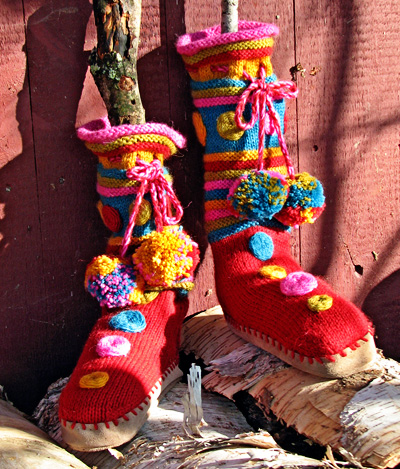 Using larger needles and A, CO 44[48, 52] sts. K 1 row, then divide sts between 3 needles and join to begin working in the round, being careful not to twist. K 6 rounds. Place safety pin or split ring marker in work to indicate beginning of round. Note: Directions for Ridge can be found in Pattern Notes [above]. When beginning with a new color, break the old color and join the new color, leaving tails of each to be woven in later. Work one Ridge using B, then one Ridge using C. Sizes S, L Only: All Sizes: Sizes S, L Only: All Sizes: K 15 rounds using E. Work nine more ridges, in the following color sequence: D, C, B, A, E, D, A, B, E.
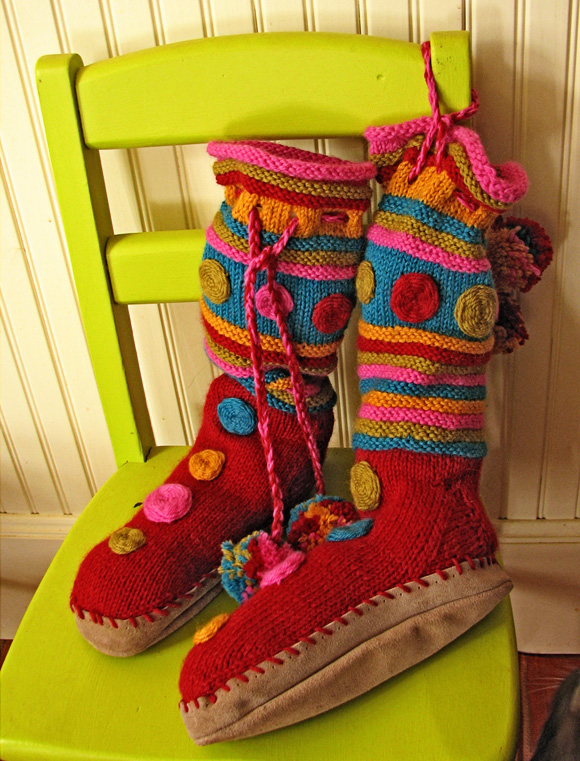
Switching to smaller needles, k 3 rounds using C. Foot will be worked entirely using C. Next Round: [K9[10, 11], k2tog] four times. 40[44, 48] sts. K 2 rounds. HEEL FLAP TURN HEEL Sizes S, M Only: Size L Only:
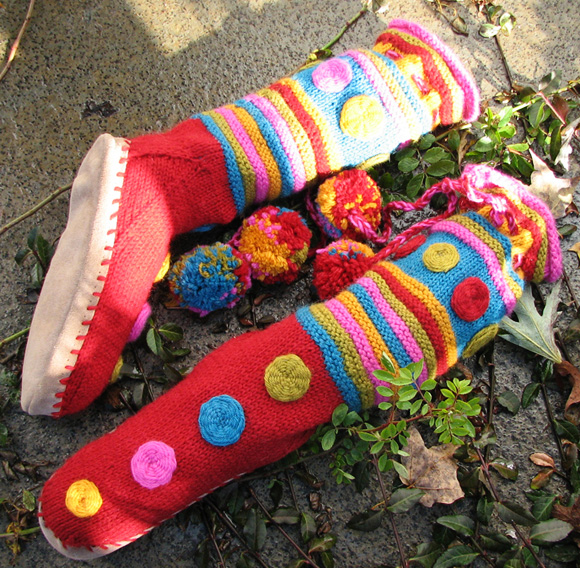
Place all sts of instep on one needle. Using needle holding heel flap sts (Needle 1), pick up and k 12[13, 14] sts along adjacent edge of heel flap. Using a second needle (Needle 2), k all sts of instep. Using third needle (Needle 3), pick up and k 12[13, 14] sts along remaining edge of heel flap, then k first 6[7, 7] sts of heel flap. This point (center of heel) will now be beginning of round; place safety pin or split ring marker in work if desired. 56[62, 66] sts: 18[20, 21] sts each on Needles 1 and 3, 20[22, 24] sts on Needle 2. Gusset Decrease Round: K to
last 3 sts of Needle 1, k2tog, k1; k
all sts of Needle 2; k1, skp, k to end
of Needle 3. FOOT TOE K to end of Needle 1, then place all sts from Needle 3 onto Needle 1. 6[8, 10] sts each on Needles 1 and 2. Graft sts on Needle 1 to sts on Needle 2. |
|
FINISHING Embroidery
If you are a knitter who hasn't ever done embroidery before, never fear! It is easy -- especially when you are using wool which fills in nicely and covers up mistakes. When you first start the spider webs, they won't look like much. Keep weaving around the base spokes and fill them solidly. The spider webs will become puffy and slightly sculptural. CORD Crocheted Method: Knitted Method: Using photos as guides, thread ties through eyelets. Using desired color and whip stitch, sew slipper feet into suede slipper bottoms. |
| ABOUT THE DESIGNER |
She is the author of several knitting and embroidery books, the newest being Color by Kristin [Sixth+Spring Books, 2009]. Her yarn Julia is available nationwide (distributed by Nashua Handknits/ Westminster Fibers) and her stitchery kits are distributed by JCA. Visit her website and blog at kristinnicholas.com. |
Pattern, images + illustrations © 2009 Kristin Nicholas. Contact Kristin |



